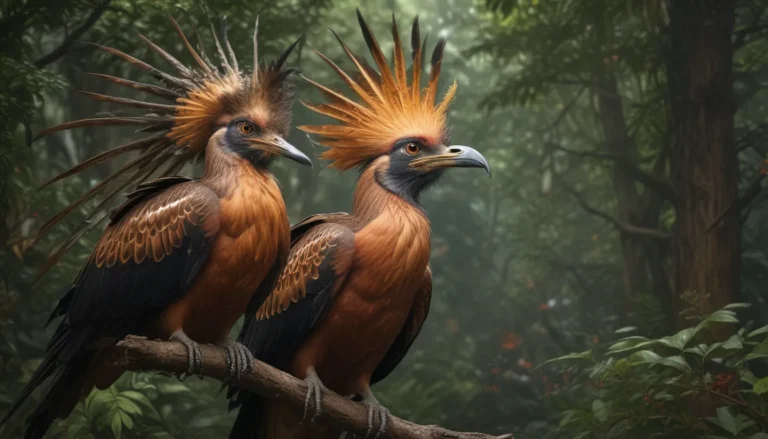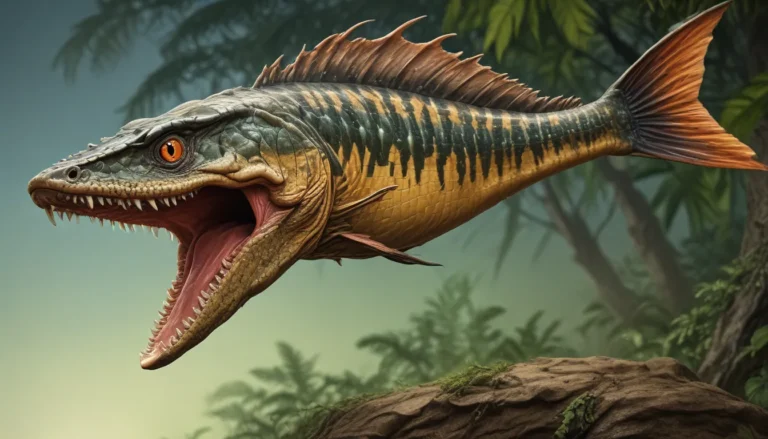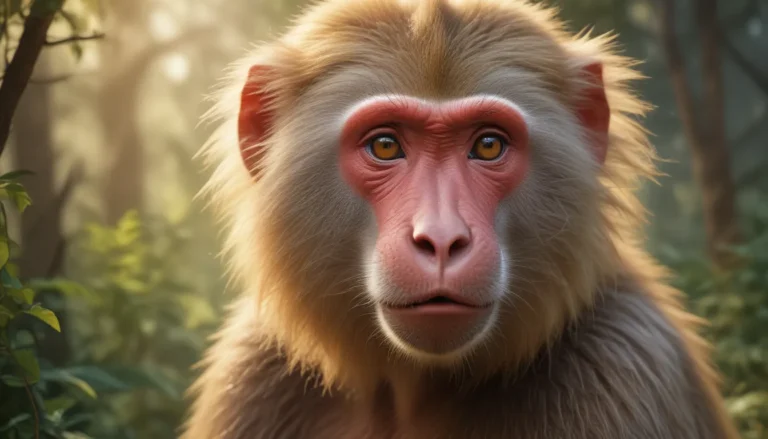The pictures we use in our articles might not show exactly what the words say. We choose these pictures to make you interested in reading more. The pictures work together with the words but don’t take their place. The words still tell you the important facts.
Are you ready to embark on an exciting journey into the world of the Troodon dinosaur, also known as the "wounding tooth"? These fascinating creatures, adorned with feathers and possessing exceptional intelligence, prowled the Earth during the late Cretaceous period, leaving behind a legacy of mystery and discovery. Join us as we explore 11 intriguing facts about Troodon dinosaurs, shedding light on their behavior, physical characteristics, and the crucial role they played in ancient ecosystems.
Unveiling the Troodon’s Mysteries
Let's dive deep into the captivating world of Troodon dinosaurs and uncover the secrets that make them a truly exceptional species. From their advanced cognitive abilities to their nocturnal habits and unique physical features, Troodons are a treasure trove of fascinating information that continues to intrigue scientists and enthusiasts alike.
The Brain Power of Troodon
One of the most remarkable features of the Troodon dinosaur was its relatively large brain. With a brain size comparable to modern-day birds, Troodons exhibited advanced cognitive abilities, making them stand out among their prehistoric counterparts. Their highly developed optic lobe suggests exceptional visual capabilities, aiding them in their hunting endeavors.
The Swift Hunter: Troodon’s Agility
Equipped with long legs and a lightweight body, Troodon was a swift and agile predator. Their ability to chase down prey with ease made them formidable hunters in their ecosystem, showcasing their adaptability and efficiency in the hunt.
Embracing the Night: Troodon’s Nocturnal Nature
The structure of Troodon's eyes hinted at its nocturnal behavior, with large orbits and specialized adaptations allowing it to thrive during the darkness of night. This adaptation provided Troodon with a strategic advantage, potentially enabling them to avoid competition with other predators and utilize the cover of darkness to their benefit.
The Serrated Weapons: Troodon’s Sharp Teeth
Troodon's serrated teeth were perfectly designed for slicing through flesh, enabling them to efficiently tear apart their prey. These sharp, formidable teeth were a crucial tool in the Troodon's arsenal as skilled hunters.
Social Creatures: Troodon’s Pack Mentality
Fossil evidence suggests that Troodons were social animals, living and hunting in packs. This social behavior likely offered advantages such as cooperative hunting and increased protection, emphasizing the importance of social dynamics in the Troodon's ecosystem.
Draped in Feathers: Troodon’s Adornments
Recent discoveries have unveiled that Troodon, like many other theropod dinosaurs, bore feathers. These feathers provided insulation and potentially played a role in display and communication, adding to the allure of these remarkable creatures.
The Window to the Soul: Troodon’s Eyes
Troodon's large, forward-facing eyes endowed them with binocular vision, enhancing their depth perception and precision in capturing prey. This unique feature was a key asset in their hunting strategies, allowing them to navigate their environment with unparalleled accuracy.
The Late Cretaceous Residents: Troodon’s Timeline
Troodon existed approximately 75 to 65 million years ago, residing in the Late Cretaceous period alongside iconic dinosaurs like Tyrannosaurus rex and Triceratops. Their presence in this ancient epoch paints a vivid picture of a diverse and dynamic prehistoric world.
The Riddle of the Claw: Troodon’s Specialized Appendage
Troodon boasted a retractable claw on their hind feet, adding to their arsenal of hunting tools. This specialized feature was likely used for grasping and capturing prey, offering them a strategic advantage in their predatory pursuits.
The Genius Among Dinosaurs: Troodon’s Intelligence
With their large brains and advanced cognitive abilities, Troodons showcased remarkable intelligence. Their complex behaviors, problem-solving skills, and ability to learn from experience set them apart as one of the most intelligent dinosaurs to have roamed the Earth.
Traversing Continents: Troodon’s Global Reach
Fossil remains of Troodon have been unearthed in North America and Asia, showcasing the wide geographic distribution of this intriguing species. These discoveries shed light on the expansive range of the Troodon dinosaur during its existence.
Unveiling the Enigmatic Troodon: A Conclusion
In conclusion, the Troodon dinosaur stands as a captivating enigma in the tapestry of prehistoric life. Their intelligence, hunting prowess, and unique adaptations make them a species worthy of exploration and admiration. As we delve deeper into the world of Troodon dinosaurs, we uncover a wealth of knowledge that enriches our understanding of ancient ecosystems and the evolutionary history of dinosaurs.
Frequently Asked Questions:
-
What is the origin of the name "Troodon"?
The name "Troodon" originates from the Greek words "troo" meaning "wounding" and "odon" meaning "tooth," referencing the sharp, serrated teeth of this dinosaur. -
How large were Troodon dinosaurs?
Troodons were relatively small dinosaurs, measuring around 6-8 feet in length and weighing approximately 70-100 pounds. -
Were Troodons intelligent creatures?
Yes, Troodons are believed to have exhibited high levels of intelligence, with their large brain size suggesting advanced cognitive abilities. -
What was the diet of Troodons?
Troodons were carnivorous dinosaurs that preyed on small animals such as lizards, small mammals, and other small dinosaurs. -
Where have Troodon fossils been discovered?
Troodon fossils have been found in North America, particularly in the western United States and Canada. -
What unique physical features did Troodons possess?
Troodons had large eyes, sharp teeth, long legs, grasping hands with sharp claws, and a retractable claw on their hind feet. -
When did Troodon dinosaurs thrive?
Troodons inhabited the Earth during the Late Cretaceous period, around 75-65 million years ago. -
Were Troodons nocturnal creatures?
Evidence suggests that Troodons were primarily nocturnal, engaging in hunting and foraging activities during the night. -
Did Troodons face any predators?
While Troodons were adept predators, they may have encountered competition from larger carnivorous dinosaurs like Tyrannosaurus rex. -
Are Troodons related to birds?
Troodons are considered closely related to early bird species, showcasing potential bird-like features and behaviors. -
Are Troodons still in existence today?
No, Troodon dinosaurs became extinct around 65 million years ago, alongside the majority of dinosaur species.
A Commitment to Quality Content
At our core, we are dedicated to providing trustworthy and engaging content that enriches your understanding of the world around you. Each fact we share is a product of real user contributions, ensuring a diverse array of insights and information. Through meticulous editing and review by our dedicated team, we uphold the highest standards of accuracy and authenticity, delivering content that is not only fascinating but also credible. Join us on this journey of exploration and discovery as we uncover the mysteries of the past and present, one fact at a time.






